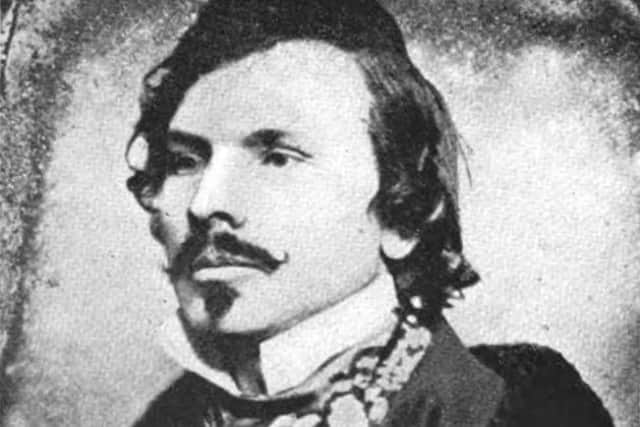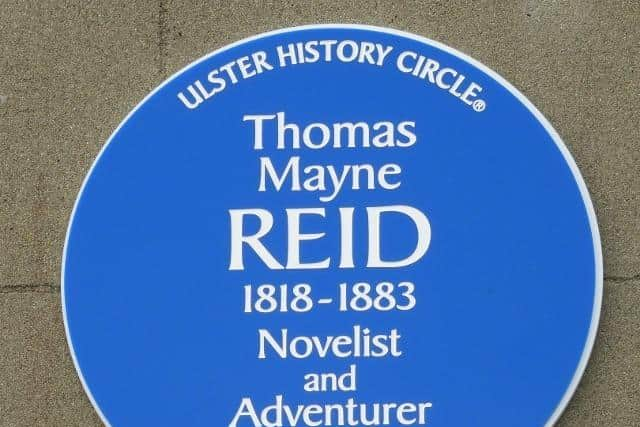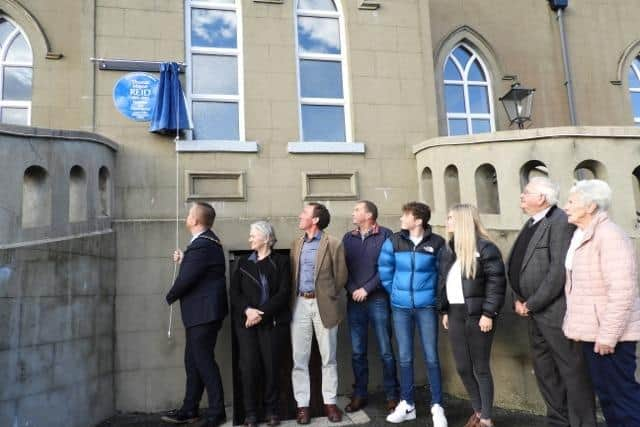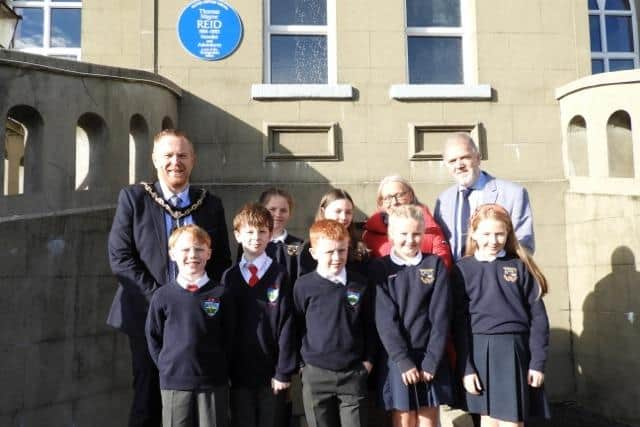Blue plaque unveiled to Co Down novelist and adventurer Thomas Mayne Reid


The ceremony organised by the Ulster History Circle shone a light on the life of novelist and adventurer Thomas Mayne Reid and took place at Drumgooland Presbyterian Church, a place of worship built by his father.
Mayne Reid as he was later known was born in ‘Mourneview’ Ballyroney in 1818, the eldest son of the Rev Thomas Mayne Reid. His father had a long association with the Church, being the grandson of the first Burgher minister to settle in Ireland.
Advertisement
Hide AdAdvertisement
Hide AdBeing minister of Drumgooland, Thomas Mayne Reid expected his son to follow him into the ministry and so Thomas was sent to the Academical Institution (now RBAI) in Belfast. Here he distinguished himself in classics, mathematics and elocution, but the ministry of the Presbyterian Church was not for him, and so he emigrated to America and arrived in 1840 in New Orleans.


And so he dropped the name Thomas and began the adventure of a lifetime. It is said that Mayne put the ‘wild’ into wild west.
His experiences began as a trader and hunter in the unsettled lands of the Red and Missouri rivers. He travelled through nearly every state of the Union as an overseer, schoolteacher, actor and the expeditions in Indian warfare, gave him enough material to write his future novels and sketches.
In 1848 in Philadelphia, he settled as a journalist and it was here he met Edgar Allan Poe who became a friend. Mayne Reid wrote for journals and magazines until the lure of further adventure called. He became a captain in the US Service and joined the Mexican War where he was severely wounded.
Advertisement
Hide AdAdvertisement
Hide AdAfter a visit home to Ireland, he settled in London, turned his attention finally to literature, and published his first novel, ‘The Rifle Rangers’ in London in 1850.


Novels and stories soon followed. His 75 novels bore names such as ‘The Scalp Hunters’, ‘The Desert Home’, ‘The White Chief’, ‘The Boy Hunters’, ‘The Hunter’s Feast’ in a literary career spanning almost 30 years, producing westerns and children’s adventure stories. He was every boy’s favourite author and remained so, long after his death in 1883.
In his autobiography, US President Theodore Roosevelt credited Mayne Reid with being a major early inspiration.
It is said that TM Reid never fully recovered from his wounds from the Mexican War. He died on October 22, 1883 and is buried in the Kensal Green Cemetery in London.
Advertisement
Hide AdAdvertisement
Hide AdThe name of Mayne Reid lives on in the names of many of his proud descendants who have been named after their famous ancestor.


Chris Spurr, chairman of the Ulster History Circle, said: ‘Thomas Mayne Reid was a prolific and popular author whose adventure stories of the American West were read throughout Europe and America and influenced many writers including Vladimir Nabokov, Robert Louis Stevenson and Arthur Conan Doyle.
"The Ulster History Circle is delighted to commemorate this novelist and adventurer with a blue plaque in the townland of his birth. The circle is particularly grateful to Armagh City, Banbridge and Craigavon Borough Council for their financial support towards the plaque, and to Drumgooland Presbyterian Church for their valued assistance.”